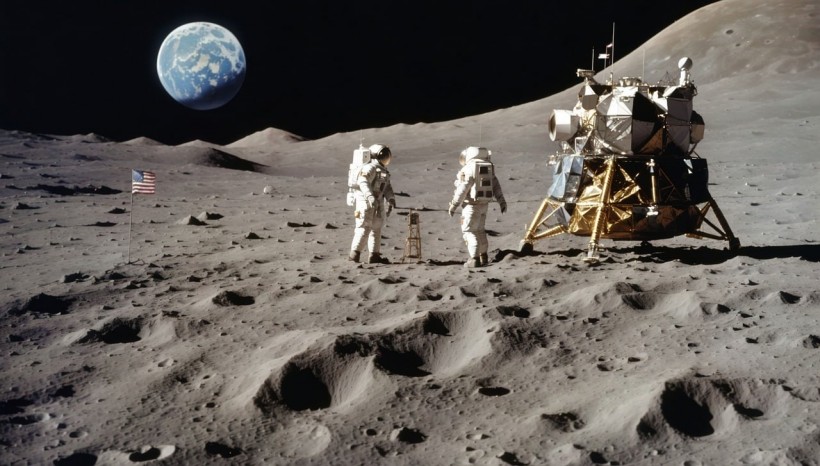On July 20, 1969, crowds gathered around their TVs as two U.S. astronauts, Neil Armstrong and Buzz Aldrin, made history by becoming the first humans to walk on the moon, equipped with bulky space suits and oxygen backpacks. Armstrong's famous words, declaring it "one small step for a man, one giant leap for mankind," resounded globally.
Despite more than fifty years passing since NASA's lunar feat, one might anticipate contemporary lunar landings to be more straightforward given advancements. However, the complexities of modern space exploration challenge this assumption, prompting reflection on the evolution of rocket science from the mid-20th century to the present day.

(Photo : Pixabay/AartlistDesign)
Recent Moon Landing Triumphs and Failures
On February 22, a significant milestone was reached as Odysseus, a spacecraft engineered by Intuitive Machines, successfully landed at the moon's south pole, marking the first U.S. lunar touchdown in over five decades. This achievement not only demonstrated the capabilities of private space exploration but also underscored the continued interest and investment in lunar exploration.
However, the triumph was tempered by challenges encountered post-landing, notably the breakage of one of Odysseus's legs, resulting in its toppled position and limited solar power supply to its cells. Despite engineers' efforts to salvage the situation, the spacecraft was eventually powered down on February 29, highlighting the complexities and risks associated with lunar missions.
This event adds to a series of troubled lunar landings, exemplified by Japan's SLIM spacecraft landing upside down on the moon due to an engine malfunction and the private U.S. moon lander Peregrine's rerouting to Earth's atmosphere following a propellant leak.
Moreover, China and India succeeded in deploying robotic landers on the moon, whereas Russia experienced setbacks with Luna 25 crash-landing years after Luna 9's gentle touchdown. Although these challenges underscore the difficulties of lunar exploration, they provide valuable insights for future missions and space technology advancements.
READ ALSO: NASA Released Remastered Images of Apollo 17 Moon Mission on Its 50th Anniversary
Challenges of Modern Moon Landings
Landing on the moon poses significant challenges, largely due to its thin atmosphere, which prevents the use of parachutes and necessitates fuel-powered descent systems. This difficulty has historical precedent, as both the U.S. and the Soviet Union faced numerous failures in their early attempts to reach the moon.
Even the iconic Apollo 11 mission, which successfully landed astronauts on the lunar surface, encountered fuel shortages and unexpected alarms just before touchdown. However, experts like Jack Burns emphasize that these setbacks are integral to the learning process, reflecting the evolving landscape of space exploration.
Despite the technological advancements since the Apollo era, lunar missions remain complex endeavors. Modern engineers are tasked with relearning lunar landing techniques using new technologies, as the knowledge and expertise of previous generations have diminished.
It is simply unrealistic to recreate Apollo from scratch as most of the technology back then have been retired. As modern lunar exploration faces new challenges, rebuilding lunar landers requires modern components and "hardening" for space conditions. Even with computing advances, safe and affordable missions remain complex due to spaceflight demands and lunar obstacles.
Robotic lunar landers now rely on sophisticated camera systems, computers, and AI to autonomously navigate and avoid obstacles during descent. With communication delays of up to three seconds between Earth and the spacecraft, human intervention during the critical landing phase is impractical.
These obstacles highlight the necessity for inventive solutions and resilient technologies to guarantee the triumph of contemporary lunar missions.
RELATED ARTICLE: NASA Delays Artemis II and Artemis III Missions for Safety Improvements; Moon Landing Now To Occur in 2026
Check out more news and information on the Moon Landing in Science Times.














